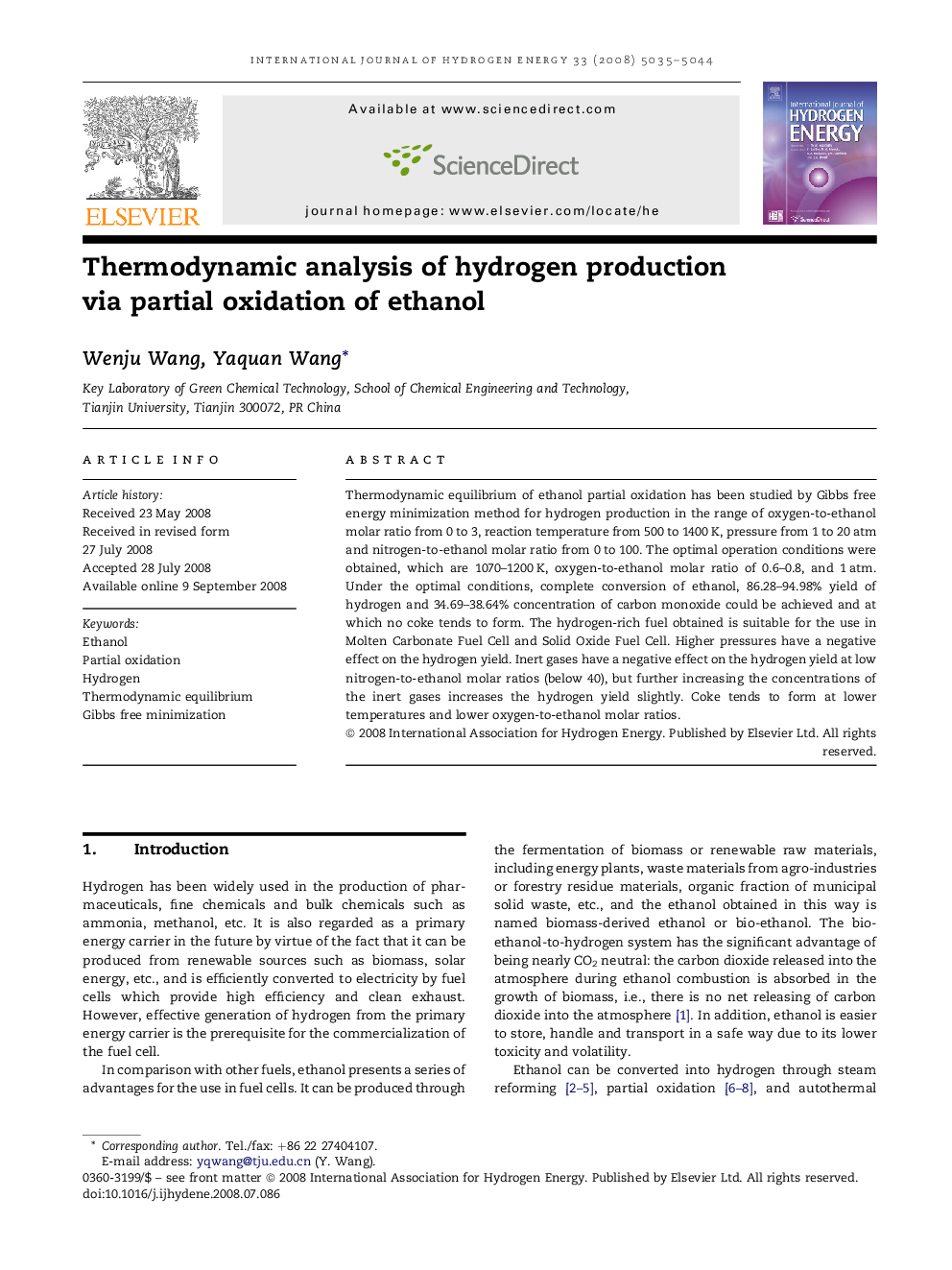| Article ID | Journal | Published Year | Pages | File Type |
|---|---|---|---|---|
| 1281415 | International Journal of Hydrogen Energy | 2008 | 10 Pages |
Thermodynamic equilibrium of ethanol partial oxidation has been studied by Gibbs free energy minimization method for hydrogen production in the range of oxygen-to-ethanol molar ratio from 0 to 3, reaction temperature from 500 to 1400 K, pressure from 1 to 20 atm and nitrogen-to-ethanol molar ratio from 0 to 100. The optimal operation conditions were obtained, which are 1070–1200 K, oxygen-to-ethanol molar ratio of 0.6–0.8, and 1 atm. Under the optimal conditions, complete conversion of ethanol, 86.28–94.98% yield of hydrogen and 34.69–38.64% concentration of carbon monoxide could be achieved and at which no coke tends to form. The hydrogen-rich fuel obtained is suitable for the use in Molten Carbonate Fuel Cell and Solid Oxide Fuel Cell. Higher pressures have a negative effect on the hydrogen yield. Inert gases have a negative effect on the hydrogen yield at low nitrogen-to-ethanol molar ratios (below 40), but further increasing the concentrations of the inert gases increases the hydrogen yield slightly. Coke tends to form at lower temperatures and lower oxygen-to-ethanol molar ratios.
